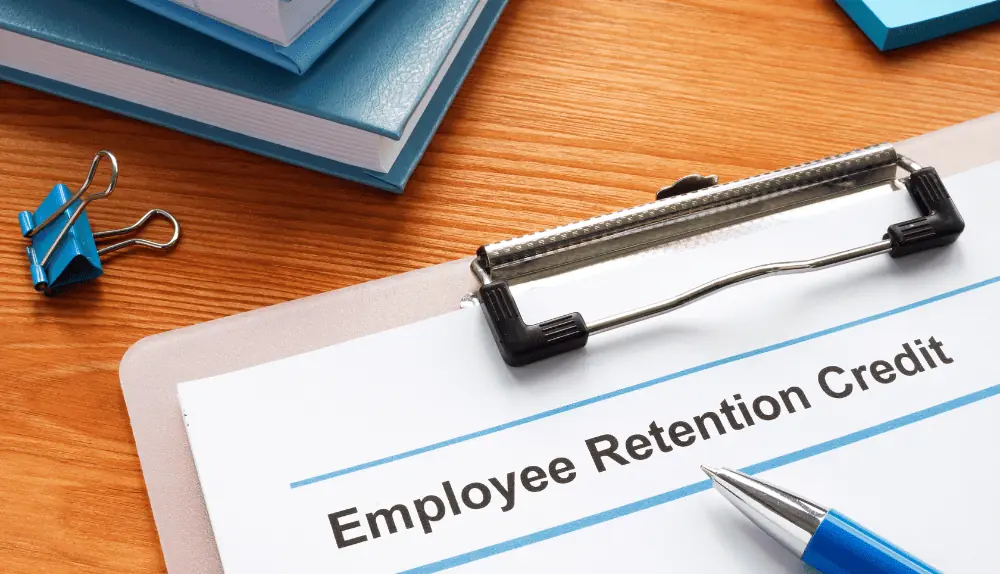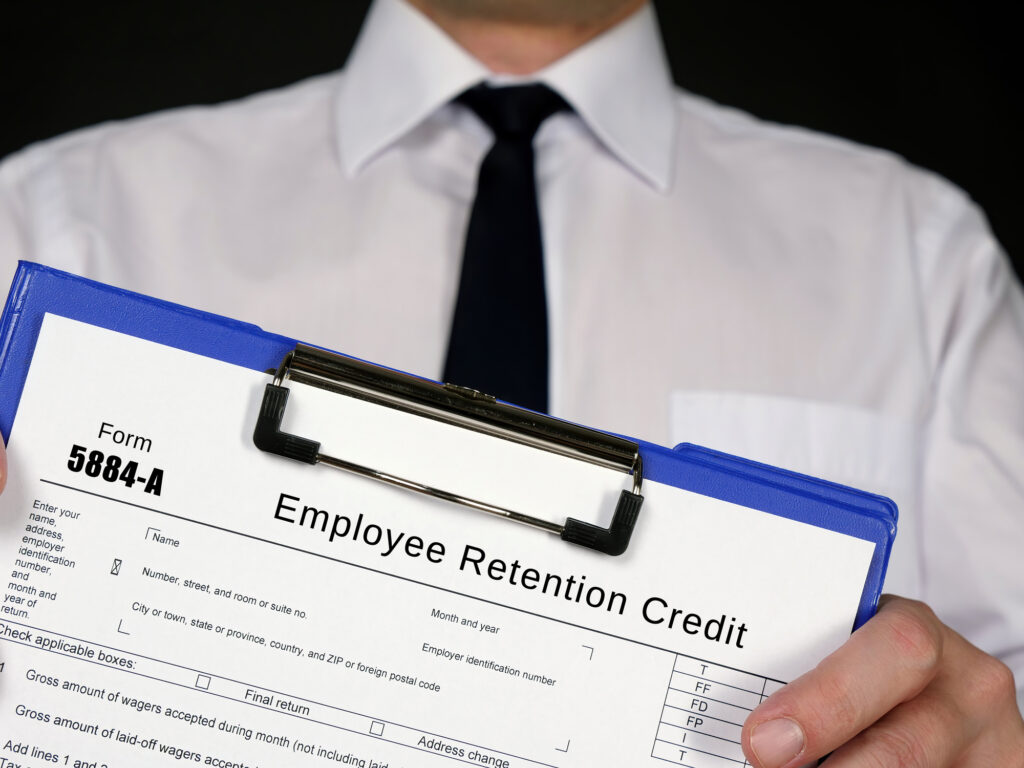The IRS is taking several measures in its ongoing efforts to address false and fraudulent ERC claims. These include an indefinite extension of the moratorium on processing claims, impacting the ERC withdrawal program. Additionally, a legislative deal in progress could conclude the ERC as early as 31st January as part of the 2024 federal budget. Many developments are unfolding concerning the ERC. In this article, we take an in-depth look at the current state of the Employee Retention Credit (ERC).
The Employee Retention Credit, or ERC, created to assist COVID19 impacted employers, has attracted opportunistic consulting firms because of its appeal as a refundable tax credit. While pledging substantial refunds, many entities omit crucial information about wage deduction adjustments and other limitations embedded within the ERC rules.
Due to suspected abuse, the IRS issued a moratorium in the fall of 2023 on accepting new claims while they evaluate their processes. But where does the ERC stand as of now? Let’s see!
Key Takeaways
- IRS Measures and Processing Halt: The IRS has taken steps to address false and fraudulent ERC claims, including an indefinite extension of the processing moratorium. This pause serves the dual purpose of identifying fraudulent claims and managing the millions of claims received over the past three years.
- Legislative Developments and Proposed Changes: A legislative deal in progress, led by Jason Smith and Ron Wyden, proposes changes to the ERC framework. If approved, the proposed legislation could conclude the ERC as of January 31, 2024. The IRS has introduced a VDP and a withdrawal program for taxpayers with ERC claims.
- Eligibility Criteria for ERC: To qualify for the ERC, businesses must meet eligibility criteria based on a significant decline in gross receipts in 2020 or 2021 compared to 2019. The gross receipts test compares the relevant calendar quarter to the same quarter in 2019, with specific thresholds for qualification. The suspension test is satisfied if business operations are fully or partially suspended due to government orders related to the COVID-19 pandemic.
- Penalties for Improper ERC Claims: The IRS actively addresses improper ERC claims through criminal investigations and penalties. Initiatives include a claims withdrawal process, a VDP for acknowledging prior improper claims, and proposed penalties for ERC promoters. Proposed penalties could reach $200,000 or 75% of the ERC promoter’s gross income.
Current State of ERC

Throughout 2023, the Employee Retention Credit (ERC) program remained a significant part of federal employment tax credits. Introduced through the CARES Act in 2020, this refundable credit aimed to assist businesses and tax-exempt organizations affected by the pandemic. It encompasses qualified wages paid by eligible employers from March 13, 2020, to September 30, 2021, which was deemed crucial to support businesses during a challenging period.
Notably, the IRS had halted the processing of ERCs in the fall of 2023. This pause served a dual purpose for the IRS – it aids in identifying a considerable number of fraudulent claims associated with the credit. The IRS has been struggling to keep up with the millions of claims received over the last three years.
By initial revenue estimates, the joint committee initially projected the credit at $86 billion combined for 2020 and 2021. However, as of March 2023, the IRS reported claims exceeding $150 billion, and by October 2023, this figure surged to approximately $230 billion.
According to the most recent news, as of January 16, 2024, a preliminary framework was proposed for tax legislation. Led by Jason Smith and Ron Wyden, this proposal has outlined a framework for managing the completion of the ERC program. The proposed legislation includes substantial changes, with notable modifications to the ERC. If the proposed legislation is approved, the ERC will cease to exist after January 31, 2024.
Simultaneously, the IRS has introduced a Voluntary Disclosure Program (VDP), enabling taxpayers who have already received ERC refunds to apply until March 22, 2024. This program offers audit certainty in exchange for returning a portion of the refund. Additionally, an ongoing IRS withdrawal program (subject to potential termination) allows taxpayers to withdraw ERC claims yet to be paid by the IRS. With several deadlines approaching, taxpayers must make prompt decisions.
If the proposed legislation is not passed, employers can submit Employee Retention Credit (ERC) claims until April 15, 2024, for the 2020 period and until April 15, 2025, for the 2021 period.
When deciding to file withdrawal pending claims, participate in the ERC VDP, or refund claims, taxpayers must recognize that their eligibility for the ERC remains unchanged since the relevant periods in 2020 or 2021. Despite the current emphasis on fraud highlighted by the IRS, an employer’s qualification hinges solely on applying ERC law, which has remained consistent since 2021. Employers can be eligible in three ways: under recovery startup tax credit, with the gross receipts for the taxable year, or the suspension (government orders) test.
So, Who Really Qualifies?

To qualify for the Employee Retention Credit (ERC), businesses can meet eligibility criteria based on a “significant” decline in gross receipts in 2020 or 2021 compared to 2019. The IRS outlines the gross receipts test, comparing the calendar quarter in question against the same quarter in 2019. In 2020, qualification begins when gross receipts fall below 50% of those in the corresponding 2019 quarter. For 2021, the gross receipts must be less than 80% of the 2019 equivalent.
The suspension test, whether partial or full, is satisfied if the business’s operation is fully or partially suspended in a calendar quarter due to orders from a governmental authority restricting commerce, travel, or group meetings due to the COVID-19 pandemic.
When deciding whether to file, withdraw a refund claim, or engage in the Voluntary Disclosure Program, the safest route (and less likely to trigger an IRS audit) is to assess eligibility for the ERC as per the IRS interpretation. If eligible, disregarding messages about “fraud” and filing for a refund or retaining it if already received is advisable. While an audit may occur, certainty in meeting IRS eligibility criteria justifies the potential inconvenience.
High Penalties for Invalid ERC Claims

The IRS actively seeks measures to address improper ERC claims. These initiatives include more criminal investigations targeting questionable claims audit activities, implementing a claims withdrawal process for pending ERC claims, introducing a VDP for individuals acknowledging prior improper ERC claims, and issuing adjustment proposals through letters.
In the ongoing effort to combat fraud linked to aggressive ERC, promoters aim to strengthen enforcement against inaccurate claims. Existing regulations impose a $1,000 penalty per person assisting in filing an understated tax liability for another. The proposed provision introduces a distinct definition for an ERC promoter and raises the penalty to $200,000 or 75% of the ERC promoter’s gross income.
Conclusion
Deciding on the appropriate course of action becomes challenging when uncertainty exists about qualifying under the IRS’s stringent tests or if there’s an argument for eligibility under the statute but not meeting the IRS’s more rigorous criteria. Individuals falling into these categories should discuss candidly with their tax advisors.
If advisors indicate non-qualification, it’s important to inquire if the decision is based on IRS directives rather than congressional rulings, allowing for an informed choice. One certainty is that missing the deadline for filing a refund claim leaves no room for recourse, even if some IRS guidance faces challenges in court. The end of the ERC could come as soon as January 31st 2024, so be aware of deadlines.
Frequently Asked Questions
Q: How can I check the status of my ERC refund?
A direct call to the IRS is recommended to track the status of your ERC refund. Contact the dedicated business helpline at 8008294933 for assistance.
Q: What is the process for handling Employee Retention Credit?
Manage the ERC by submitting IRS Form 941X to amend previously filed returns (Form 941) for the eligible quarters as an employer. Ensure that the IRS has filed, received, and processed your Form 941 for 2020-21 before filing Form 941X.
Q: Is it advisable to apply for ERC during the moratorium period?
For businesses seeking to submit claims after September 14, 2023, although the IRS may not review new applications during the moratorium, you can still submit an ERC claim.
Q: How long does it take to receive an ERC?
During the current period with enhanced compliance reviews, the processing time for existing ERC claims has extended from the standard 90 days to 180 days. The duration may increase if a claim undergoes additional review or audit. The IRS may also request additional documentation from the taxpayer to ensure the claim's legitimacy.

